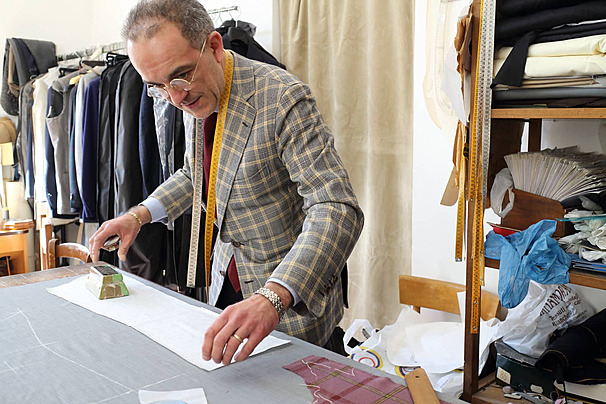How to Communicate Your Style to a Custom Tailor
Embarking on the journey of creating a bespoke garment is an exciting endeavor that allows you to express your individuality through clothing. To ensure that your custom piece truly reflects your personal style, effective communication with your tailor is paramount. This collaboration transforms your vision into a tangible, well-fitted masterpiece.
1. Understand Your
Personal Style
Before
consulting with a tailor, take time to define your personal style. Consider the
types of clothing you gravitate towards, the colors that complement your
complexion, and the fabrics you find comfortable. Reflect on your lifestyle and
the occasions for which the garment is intended. Are you aiming for a classic
business suit, a casual blazer, or an elegant evening ensemble? Having a clear
understanding of your preferences will serve as a foundation for your
discussions with the tailor.
2. Research and
Select the Right Tailor
Choosing a
tailor who aligns with your aesthetic and understands your vision is crucial.
In Bangkok, Der Herr is renowned for its bespoke tailoring services, offering a
rich legacy of craftsmanship. Their team is adept at guiding clients through
the process, ensuring each garment is a reflection of the individual's style.
You can learn more about their services and philosophy on their website: DerHerr Bespoke Tailor.
3. Bring Visual
References
Visual
aids can significantly enhance communication. Compile images of garments that
resonate with your desired look. These can include photographs from magazines,
online platforms, or even sketches. Highlight specific elements you appreciate,
such as lapel styles, pocket designs, or button placements. Sharing these
visuals with your tailor provides a concrete starting point for discussions and
ensures you're both envisioning the same outcome.
4. Discuss Fabric
Choices
Fabric
selection plays a pivotal role in the garment's appearance and functionality.
Engage in a detailed conversation with your tailor about suitable fabrics,
considering factors like texture, weight, drape, and breathability. For
instance, if you're commissioning a suit for Bangkok's warm climate, lightweight
materials like linen or cotton might be advisable. Der Herr offers a diverse
range of high-quality fabrics and can provide expert recommendations tailored
to your needs.
5. Communicate Fit
Preferences
A key
advantage of bespoke tailoring is achieving a fit that complements your
physique. Clearly articulate your fit preferences—whether you favor a slim,
regular, or relaxed silhouette. Discuss specifics such as jacket length, waist
suppression, and trouser break. Don't hesitate to mention any discomforts
you've experienced with off-the-rack clothing, as this insight will help the
tailor make necessary adjustments to enhance comfort and aesthetics.
6. Be Open to
Professional Advice
While it's
essential to convey your desires, remain receptive to your tailor's expertise.
Experienced tailors like those at Der Herr have a wealth of knowledge regarding
garment construction, fabric behavior, and style nuances. They can offer
valuable suggestions that may enhance the final product, perhaps proposing
design elements or alterations you hadn't considered. This collaborative
approach often results in a garment that exceeds expectations.
7. Clarify Details
and Confirm Understanding
Ensure
that every aspect of the design is thoroughly discussed and understood. This includes
button styles, stitching details, lining choices, and any personalization
options like monogramming. It's beneficial to summarize your discussions and
confirm specifics before the tailoring process begins. This practice minimizes
the risk of miscommunication and ensures alignment between your vision and the
tailor's execution.
8. Schedule
Fittings and Provide Feedback
Multiple
fittings are integral to the bespoke process, allowing for adjustments that
perfect the fit and style. Attend these sessions with a critical eye and
provide honest feedback. If something doesn't align with your expectations,
communicate this promptly. A reputable tailor will appreciate your input and
make the necessary modifications to achieve the desired outcome.
9. Trust the Process
and Be Patient
Crafting a
bespoke garment is an art that requires time and precision. Patience is
essential, as rushing can compromise quality. Trust in your tailor's process
and expertise, understanding that the culmination of careful planning, skilled
craftsmanship, and collaborative communication will result in a garment that is
uniquely yours.
Conclusion
Effective
communication with your custom tailor is the cornerstone of achieving a garment
that embodies your personal style. By articulating your preferences, engaging
in open dialogue, and valuing the tailor's expertise, you pave the way for a
successful collaboration. Whether you're working with esteemed establishments
like Der Herr in Bangkok or another bespoke tailor, these principles will guide
you toward a satisfying and stylish outcome.

Comments
Post a Comment